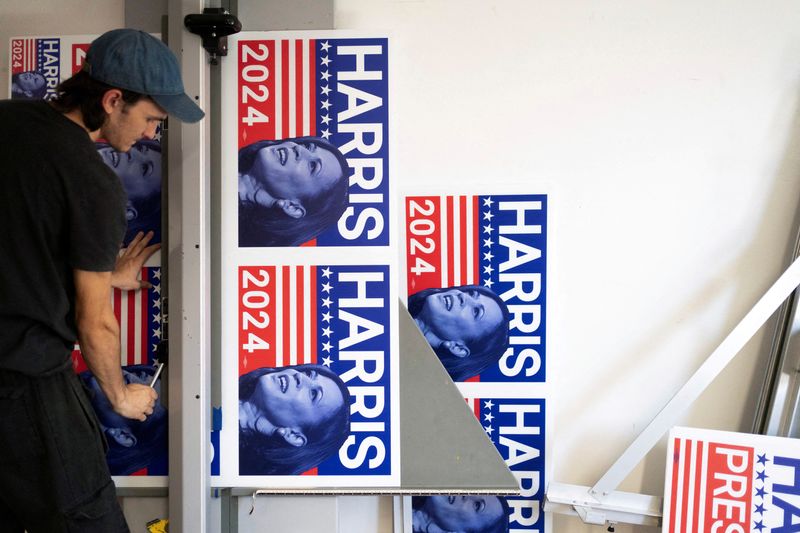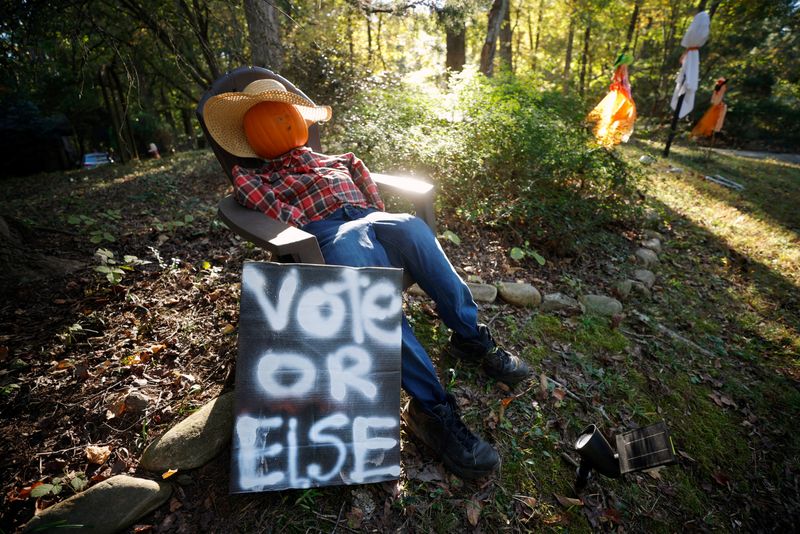By Costas Pitas
(Reuters) - Libby Brouwer was so fed up with political advertisements interrupting her YouTube viewing in the battleground state of Michigan that she opted to pay $13.99 per month to go ad-free.
And don't get her started on all the campaign phone calls and text messages that have flooded her phone ahead of the Nov. 5 election.
"I think it's really, really a rude thing to be sending unsolicited texts," said Brouwer, 42, a business strategist in Traverse City who plans to vote for Republican Donald Trump.
Brouwer is among just over 60 million Americans who live in one of the seven competitive states that will decide if Trump or Democrat Kamala Harris is elected president.
Those voters have been bombarded with robocalls, texts, campaign visits, billboards, flyers and social media messages as the campaigns and their allies try to sway the small slice of the electorate that could swing the contest's outcome.
Between July 22 and Oct. 8, $1 billion out of over $1.3 billion of presidential ad spending has been in the swing states, according to AdImpact, which tracks political advertising.
About $279 million was spent in Pennsylvania alone, followed by more than $200 million in Michigan.
Some 200 miles southeast of Brouwer, on the outskirts of Detroit, 50-year old architect Thomas J. Miller, who is backing Vice President Harris, has similar gripes about political advertisements on YouTube.
"Every single lead into every single video is either (former President Barack) Obama or Kamala," Miller said.
"If I watch anything with firearms or knives or anything else... those tend to have Trump candidates and Trump advertisements thrown in there," he added.
SWING STATE PERKS
There are some benefits to living in a political battleground, however.
During the 2020 election, almost 75% of campaign visits by the major party nominees took place in just six states, according to FairVote, a nonpartisan organization seeking a more representative system.
Many locals love the thrill of grabbing a placard, donning a sloganed t-shirt, red or blue cap, and seeing their candidate in person in their state.
"Our vote matters here," said Lynn Clark, 35, a billboard advertising business owner in Greensboro, North Carolina. "It is a kind of a source of pride."
Nicholas Napolio, an assistant professor of political science at the University of California, Riverside, said research shows there also is some financial reward.
"Counties and congressional districts that are in states that are critical to an election... tend to receive a bit more in federal funding," he said.
In 2020, turnout was higher in swing states than across the country as a whole.
In the 13 states identified as battlegrounds that year by Ballotpedia, turnout averaged just over 65% compared to about 61% across the U.S. overall. Half of the 10 states with the highest turnout were battlegrounds.

For Miller in Michigan, the desire for life to get back to normal after Nov. 5 seems to unify people in his swing state even if politics divides them.
"At the diner, you'll hear small talk. It's like: 'I can't wait for this election to just get over with so we don't have to watch all these commercials,' and then we all look at each other and kind of smile."
